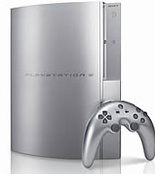|
For the sake of clarity, here is a repeat of some acronym and terminology definitions relating to
the various display technologies, used in the other table below to compare the
various screen types:
| TERM |
DEFINITION |
| TLA |
Three Letter
Acronym |
| HDTV |
High Definition
Television. The highest quality video picture
available in Digital TV. In the U.S., the 1080i and 720p
resolution formats in a 16:9 aspect ratio are the two acceptable
HDTV formats. Regular NTSC analog TV is 480i. |
| HTPC |
Home Theater
Personal Computer. The use of a PC as a processing
and source control platform for a home theater system. |
| RPTV |
Rear Projection
TV. The type of home theater screen system where the image
is projected onto the back of the screen. Can be DLP, LCD, CRT
projection technology. |
| Lumens |
An ANSI Lumen is
a measurement of light radiation or brightness. A 3,000 Lumen
projector creates a brighter picture than a 2,000 Lumen unit. The ANSI
prefix is a standards designation (American National
Standards Institute). |
| Nits |
Plasma and LCD
manufacturers use this term to define the brightness of their
screens. Another term for Nits is Candelas per square meter (Cd/m2).
One nit = 0.2919 foot-lambert. Nits includes an area definition,
unlike lumens, so you can't simply divide by Watts to establish a
Nits/watt spec. |
| 480i 720p
1080p |
resolution
measurement in lines, p for "progressive
scan", i for "interlaced scan".
Conventional TV (e.g. 480i) is interlaced whereby the screen is
scanned twice by alternate lines that are interleaved
(interlaced), whereas HDTV (e.g. 720p) can scan all lines
sequentially (consecutively or progressively). |
| DVI HDCP |
Digital Visual
Interface technology with High-bandwidth Digital
Content Protection. Developed by Intel Corporation,
HDCP is a specification to protect digital entertainment content
through the DVI interface. The HDCP specification provides a
transparent method for transmitting and receiving digital
entertainment content to DVI-compliant digital displays. Some
products, such as set-top boxes and DVD burners will require this
connector. Even if you have a HDTV set-top box, if it lacks the
DVI, your signal may be degraded. |
| HDMI |
High Definition
Multimedia Interface. Like DVI, HDMI is another
digital interface, and from what we saw at CES 2005, it may become
the universal standard. Developed by Sony, Hitachi, Thomson (RCA),
Philips, Matsushita (Panasonic), Toshiba and Silicon Image, the
High-Definition Multimedia Interface (HDMI) has emerged as the
connection standard for HDTV and the consumer electronics market.
HDMI is the first digital interface to combine uncompressed
high-definition video, multi-channel audio and intelligent format
and command data in a single digital interface. |
| SACD |
Super Audio
CD uses a new recording technology called Direct Stream
Digital. DSD records a one bit digital signal at a
sample rate of 2.8 million times per second, 64 times higher than
conventional CD's.
|
| NTSC |
Existing color
TV standard developed in the U.S. in 1953 by the National Television
System Committee. NTSC vertical line resolution is
525 lines/frame and the vertical frequency is 60Hz. The NTSC frame
rate is 29.97 frames/sec.
|
| CRT |
Cathode Ray
Tube - venerable old style picture tube |
| PDP |
Plasma Display
Panel, plasma is a physics term for an electrically charged
gas |
| LCD |
Liquid Crystal
Display, same as laptop screens |
| TFT |
Thin Film
Technology, a type of LCD |
| DLP |
Digital Light
Processor, a reflective light switch chip developed by TI.
Has a very fast response time - no motion lag |
| TI |
Texas Instruments
Corp., original manufacturer of DMD's and DLP's |
| DMD |
Digital Micro-mirror
Device - chip for DLP technology by TI |
| DNIe |
Digital Natural
Image enhancement - chip for optimizing video
picture quality, by Samsung (used in their DLP units) |
| LCoS |
Liquid Crystal
on Silicon, reflective light switch |
| SXRD
projection |
Silicon X-tal Reflective Display:
Sony's incarnation of LCoS technology. Sharp picture, no pixelation, very high resolution, reflective
system won't burn out picture element, "no moving parts"
design usually incorporates 3 imaging chips for primary colors,
instead of color wheel. |
| SED |
Surface conduction
Electron emitter Display by Toshiba/Canon |
| FED |
Field Emission
Display: New technology from Sony |
| OLED |
Organic Light
Emitting Diode display: new technology from Seiko-Epson |
| D-iLA |
Direct
Drive Image Light Amplifier, LCoS chip
developed by JVC |
| QXGA |
high screen
resolution of 2048 x 1536, attained by D-iLA chip |
| DCDi |
Directional
Correlation Deinterlacing (a de-interlacing
method to eliminate jagged edges (jaggies) along diagonal lines
caused by interpolation, developed by Faroudja corp. An
important feature to look for, this Emmy® award
winning technology was once only available in products costing
$20,000 or more, and is now available in numerous products costing
well below $2,000 |
| aspect ratio |
ratio of screen
width to height. An aspect ratio of 4:3 is conventional TV and
16:9 is HDTV (and film) |
| 3-2 pulldown |
a method of
film-to-video conversion |
| twitter and
judder |
terms describing
film conversion related artifacts |
| anamorphic
lens |
a special lens
that compresses the pixels of a 4:3 screen into a 16:9 format, and
allows a projector to use the full brightness of the display,
without black bars above and below the image. Must normally be
removed for regular 4:3 viewing. |
| SDE |
Screen Door
Effect is a term used to refer to the visible pixel
structure on a screen. |
| YADR! |
Yet Another
Dang Remote! A common exclamation heard from people
who just bought their third or fourth home audio/video component.
And then there are further unmentionable expletives when you find
out a component isn't supported, or it's just too complicated to
program everything in?? Maybe it's time to read about our experience in the remote
control review article. |
The following table provides a quick comparison of the display types;
"pixelation" refers to the ability to see individual picture elements
(pixels) at normal viewing distances (note that all the types below can
contribute to the YADR index). Please note that these products are being
constantly improved and not all manufacturer's models may be subject to
the disadvantages listed below:
| DISPLAY
TYPE |
PRO
- ADVANTAGE |
CON
- DISADVANTAGE |
CRT
conventional
picture tube |
Cathode Ray
Tube: very
sharp and bright, high contrast ratio, good picture view from
side, low cost, handles regular analog NTSC channels well, no
moving parts |
heavy
and bulky, limited in size to about 36", picture can fade |
CRT
projection
|
low
cost, large screens possible, no moving parts |
heavy
and bulky, limited viewing angles, visible raster lines, mis-convergence
can be a problem, picture can fade over time |
| LCD flat
screen panel |
Liquid Crystal
Display: bright,
sharp picture, light and compact, can hang on wall, solid state,
no moving parts |
picture can fade over time |
| LCD
projection |
fairly
bright, large screens possible, sharp picture, no moving parts |
display can fade due to heat damage to
organic compounds that some manufacturers use in the LCD,
projector bulb can fail |
| PDP Plasma
flat screen panel |
Plasma Display
Panel: bright
picture, light and compact, can hang on wall, wide viewing angle,
no moving parts, handles fast motion really well |
expensive,
some pixelation, display can burn out. |
| DLP
projection |
Digital Light
Processor: bright,
sharp picture, high contrast, no pixelation, reflective
system won't burn out picture element, very fast response time -
no motion lag. |
possible visual "rainbow" artifacts on single chip versions
caused by spinning color wheel, projector
bulb can fail |
| LCoS
projection |
Liquid Crystal
on Silicon: bright,
sharp picture, no pixelation, very high resolution, reflective
system won't burn out picture element, "no moving parts"
design usually incorporates 3 imaging chips for primary colors,
instead of color wheel. |
projector bulb can
fail |
| SXRD
projection |
Silicon X-tal Reflective Display:
Sony's incarnation of LCoS technology. Sharp picture, no pixelation, very high resolution, reflective
system won't burn out picture element, "no moving parts"
design usually incorporates 3 imaging chips for primary colors,
instead of color wheel. |
projector bulb can
fail |
| SED
panel display |
Surface conduction Electron emitter Display:
very bright
picture, very high resolution, can hang on wall, very high
contrast ratio, can be viewed from any angle,
no moving parts, handles fast motion really well |
expensive at
first, not available yet |
| FED
panel display |
Field Emission
Display: New technology from Sony, properties are similar
to SED |
expensive at
first, not available yet |
| OLED
panel display |
Organic Light
Emitting Diode display: new technology from Seiko-Epson |
expensive at
first, not available yet |
|


 Sony's PS3 game console constitutes a huge threat to Microsoft because it can act as a media hub as well as play
Blu-ray Disc™ (BD-ROM) movies. Microsoft supports the Toshiba HD DVD format, but the built-in
DVD player in the XBox 360 can only play regular DVD disks, giving Sony
a big advantage. Not only is the BD-ROM capable of true HDTV
recordings, Sony claims a data transfer rate five times the maximum data transfer rate of
regular DVD (54 Mbps versus 10 Mbps).
Sony's PS3 game console constitutes a huge threat to Microsoft because it can act as a media hub as well as play
Blu-ray Disc™ (BD-ROM) movies. Microsoft supports the Toshiba HD DVD format, but the built-in
DVD player in the XBox 360 can only play regular DVD disks, giving Sony
a big advantage. Not only is the BD-ROM capable of true HDTV
recordings, Sony claims a data transfer rate five times the maximum data transfer rate of
regular DVD (54 Mbps versus 10 Mbps). HDTV large screen systems in our homes, it falls short of the mark if
high definition DVD viewing is of any interest to you. If you set up an
HTPC with the new Windows Vista version (currently available as the
Windows Media Center extension), you will be able to install an HD DVD
player/recorder in your PC, but many people may choose not to complexify
things that much. With the Sony PS3, you can have an excellent gaming
experience AND watch high def DVD movies.
HDTV large screen systems in our homes, it falls short of the mark if
high definition DVD viewing is of any interest to you. If you set up an
HTPC with the new Windows Vista version (currently available as the
Windows Media Center extension), you will be able to install an HD DVD
player/recorder in your PC, but many people may choose not to complexify
things that much. With the Sony PS3, you can have an excellent gaming
experience AND watch high def DVD movies.